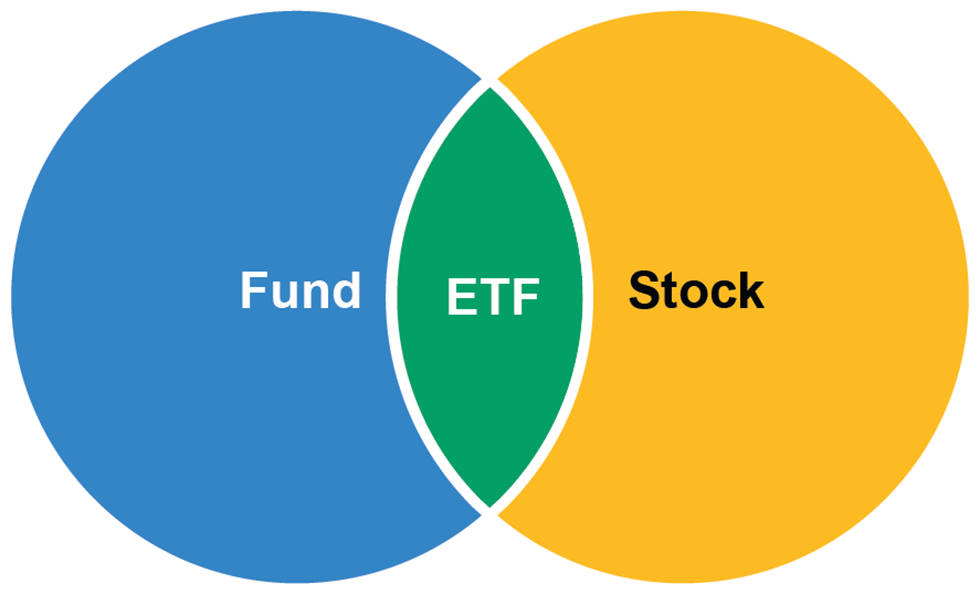Introduction to ETFs
What is an ETF?
An Exchange-Traded Fund (ETF) is an investment wrapper which combines the benefits of a fund and a stock.
A fund offers:
- Diversified exposure
- Economies of scale
- Professional management
A stock offers:
- Liquidity
- Transparency
- Trading flexibility

How does an ETF work?
The structure of the ETF wrapper provides greater opportunity for improved economics.
- In-kind creations/redemptions, where securities are exchanged for ETF shares, contribute to the cost-effectiveness of ETFs
- Market-makers help mitigate outsized premiums/discounts of the ETF market-price to the ETF net asset value

Type of ETFs

How do ETFs trade:
ETFs offer more liquidity than meets the eye.

What are active ETFs?
When looking at active ETFs, it is first important to note that terms such as “ETF”, “passive” and “index” are not synonymous. ETF simply means Exchange-Traded Fund, which means an ETF is traded at an exchange regardless of the investment strategy used.
A variety of “engines” or strategies can therefore be placed in the ETF structure to leverage its benefits.
“Active” refers to specific investment decisions, which are designed to achieve specific outcomes, such as outperforming an index (Alpha), generating income, or achieving control in terms of duration, yield or credit quality.
An active ETF provides access to these specific outcomes, all while maintaining the attributes of the ETF structure.
The ETF is just a wrapper and the content itself is independent of the vehicle

Active ETFs overview
Why invest in active ETFs?
Demand for active ETFs
Active ETF assets have grown sharply in recent years. At the end of 2017 the global assets under management were only at $58bn US dollar, growing to $565bn US dollar end of 2023.1
1 Bloomberg; Data as of 29 December 2023, US & UCITS only.
Getting to know an active ETF
Getting started
A leader in ETF investing
At J.P. Morgan, we’re combining the built-in benefits of ETFs with our best-in-class research insights, portfolio expertise and trading capabilities.
1 J.P. Morgan Asset Management, as of March 31, 2024.